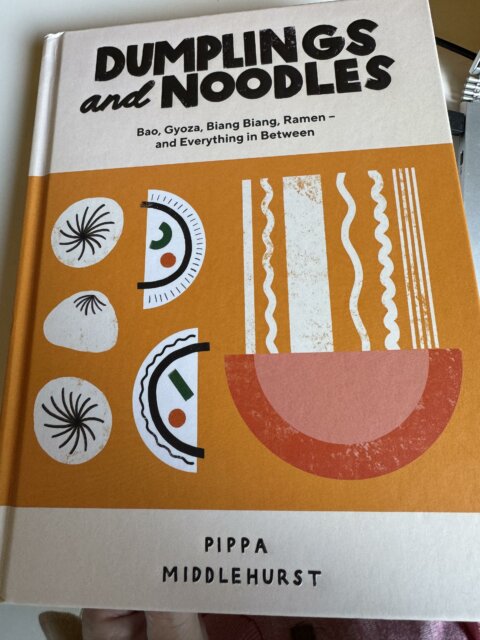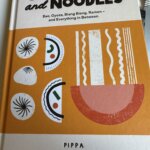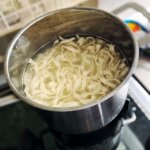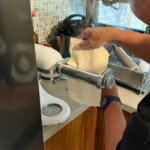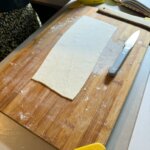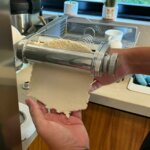Homemade Asian noodles ( hand-cut noodles )

Homemade Asian noodles ( hand-cut noodles )
420g: 300g high- gluten flour (extra strong bread flour), potato or corn starch for dusting, 3 r salt.
This noodle doesn’t require any special equipment or ingredients, which makes it perfect when flour, water and elbow grease are the only option. If you don’t have a rolling pin, use a wine bottle! Add the flour to a mixing bowl and stir in the salt. Stir through with chopsticks or a fork to get rid of any large lumps. Add 120ml (½ cup) of water very gradually until the mixture starts to come together; stop adding the water as soon as you can form the dough into a ball and the sides of the bowl are clean. The dough should not be crumbly or dry and neither should it be sticky. Knead the dough for 10-15 minutes (see note below). This dough is quite firm and so kneading may require some effort! I stand on a chair and use my body weight to help with this, or you can do as some Japanese udon-makers do – use your feet. If you are finding the dough too tough to knead, let it rest for 15 minutes, then come back to it. Once the dough is smooth, allow it to rest for 30 minutes in a resealable plastic bag, or in a bowl covered with a clean, damp tea (dish) towel. Using half the dough to begin with (leaving the rest still covered in the bag or bowl), roll it out on a floured work surface until it is very thin: 1-2mm (about ¼in). Ideally, the dough should be longer than it is wide, but this isn’t essential. Rolling the dough will require strength and patience! You can use a pasta roller for rolling out the dough, though I’ve found this takes longer than just using a rolling pin. Once the dough is rolled out, sprinkle it with plenty of potato starch or cornflour (cornstarch) and fold it over lengthways four or five times, so it is around 8cm (in) wide. Using a sharp knife, slice the dough into noodles to your desired thickness, remembering that they will expand when cooked. I usually cut the dough at around 1-2mm (about ¼in) wide for thin noodles or 8mm (⅓in) for wide ones. Unravel the noodles and coat in starch, then prepare the second half of the dough in the same way. When you’re ready, shake off any excess starch and cook the noodles in a pan of boiling salted water for 1½ minutes and serve. NOTE It is easy to become disheartened after 5 minutes of kneading if the dough isn’t looking as it should. Just keep going! Kneading is important to evenly distribute the water through the flour, and to develop the gluten strands (see page 76). If the dough looks lumpy, it just means that the water isn’t evenly distributed yet.
